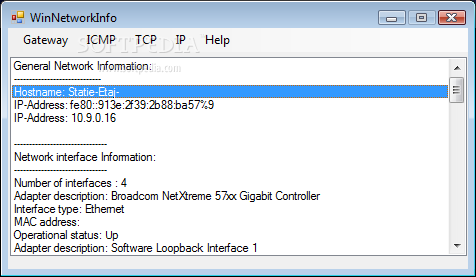


You can save TCPView's output window to a file using the Save menu item. Or by right-clicking on a connection and choosing Close Connections from the resulting context menu. You can close established TCP/IP connections (those labeled with a state of ESTABLISHED) by selecting File|Close Connections , That change state from one update to the next are highlighted in yellow those that are deleted are shown in red, and new endpoints On Windows XP systems, TCPView shows the name of the process that owns each endpoint.īy default, TCPView updates every second, but you can use the Options|Refresh Rate menu item to change the rate. You can use a toolbar button or menu item to toggle the display of resolved names. When you start TCPView it will enumerate all active TCP and UDP endpoints, resolving all IP addresses to their domain name versions. You can use TCPView on Windows 95 if you get the Windows 95 TCPView works on Windows NT/2000/XP and Windows 98/Me. The TCPView download includes Tcpvcon, a command-line version with the same functionality. TCPView provides a more informative and conveniently presented subset of the Netstat program that ships with Windows. On Windows NT, 2000 and XP TCPView also reports the name of the process that owns the endpoint. TCPView is a Windows program that will show you detailed listings of all TCP and UDP endpoints on your system, including the local and remote addresses and state of TCP connections. Sysinternals Freeware - Mark Russinovich & Bryce Cogswell Sysinternals Freeware - TCPView "./includes/main.css"


 0 kommentar(er)
0 kommentar(er)
